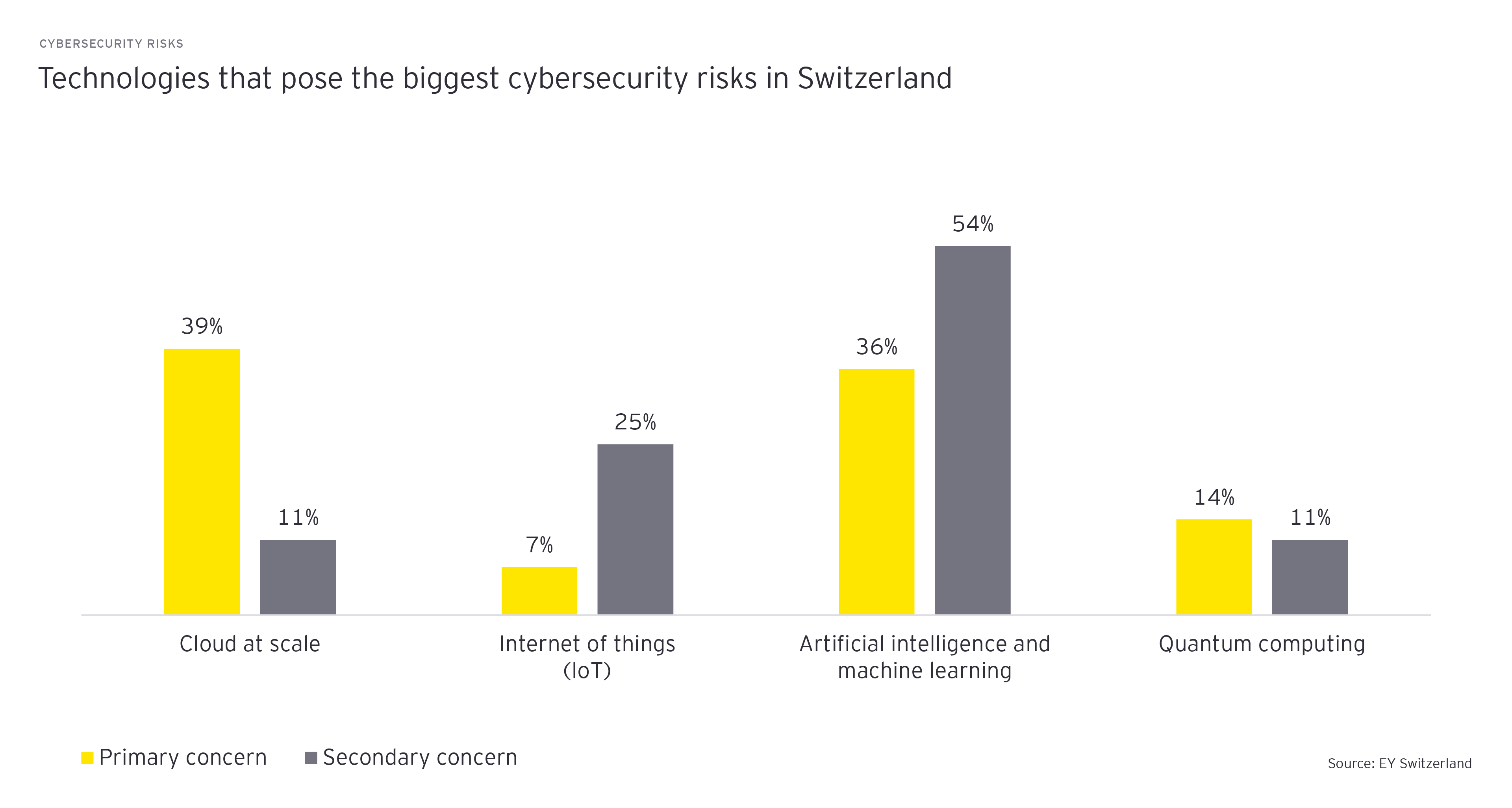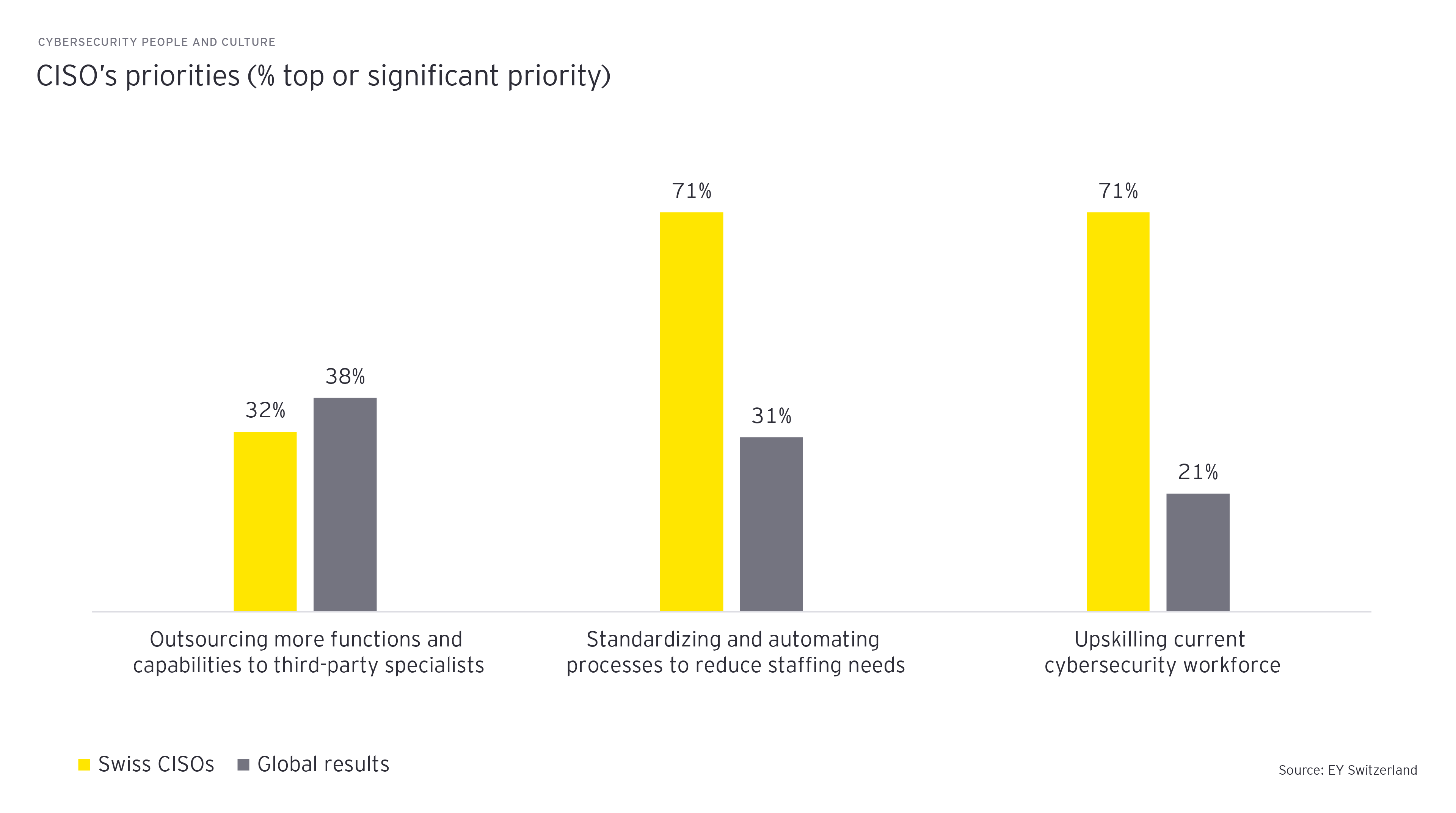EY refers to the global organization, and may refer to one or more, of the member firms of Ernst & Young Limited, each of which is a separate legal entity. Ernst & Young Limited is a Swiss company with registered seats in Switzerland providing services to clients in Switzerland.
How EY can help
-
Discover how EY's Cybersecurity Transformation solution can help your organization design, deliver, and maintain cybersecurity programs.
Read more
More than three-quarters (76%) of companies worldwide take more than six months on average to detect cyber incidents – and face an average of 44 significant cyber incidents per year. Swiss-based companies have fewer annual incidents – just 14 on average – and also respond to those that do occur more quickly (under five months on average). This comparatively strong performance may explain why Swiss CISOs are significantly more satisfied with their overall cybersecurity approach (71% compared to 42% globally). Despite their comparative responsiveness, half of Swiss study participants raise the alarm about the ability of their cybersecurity defenses to meet evolving cyber threats quickly enough. This perhaps reflects as much on the pace of change in general as it does on Swiss companies’ ability to respond.
People and culture
The Swiss survey results highlight the role of people in what is at first glance a tech-driven topic. Security leaders widely acknowledge the potential for human error as a major weakness. This is why companies should invest in a strong security culture through training and awareness campaigns – and it’s also why malevolent forces so often target the human interface.
As in the global survey, six in 10 Swiss cyber leaders polled reported a lack of adherence to cybersecurity best practices among the non-IT workforce as one of the biggest internal challenges (ranking at number 4 out of 8). This mirrors the results of the global survey. Besides, only six in 10 Swiss-based companies are satisfied with the effectiveness of their cybersecurity training programs, only slightly more than the global average (50%). These findings point again to the need for better collaboration between IT and other business functions.







